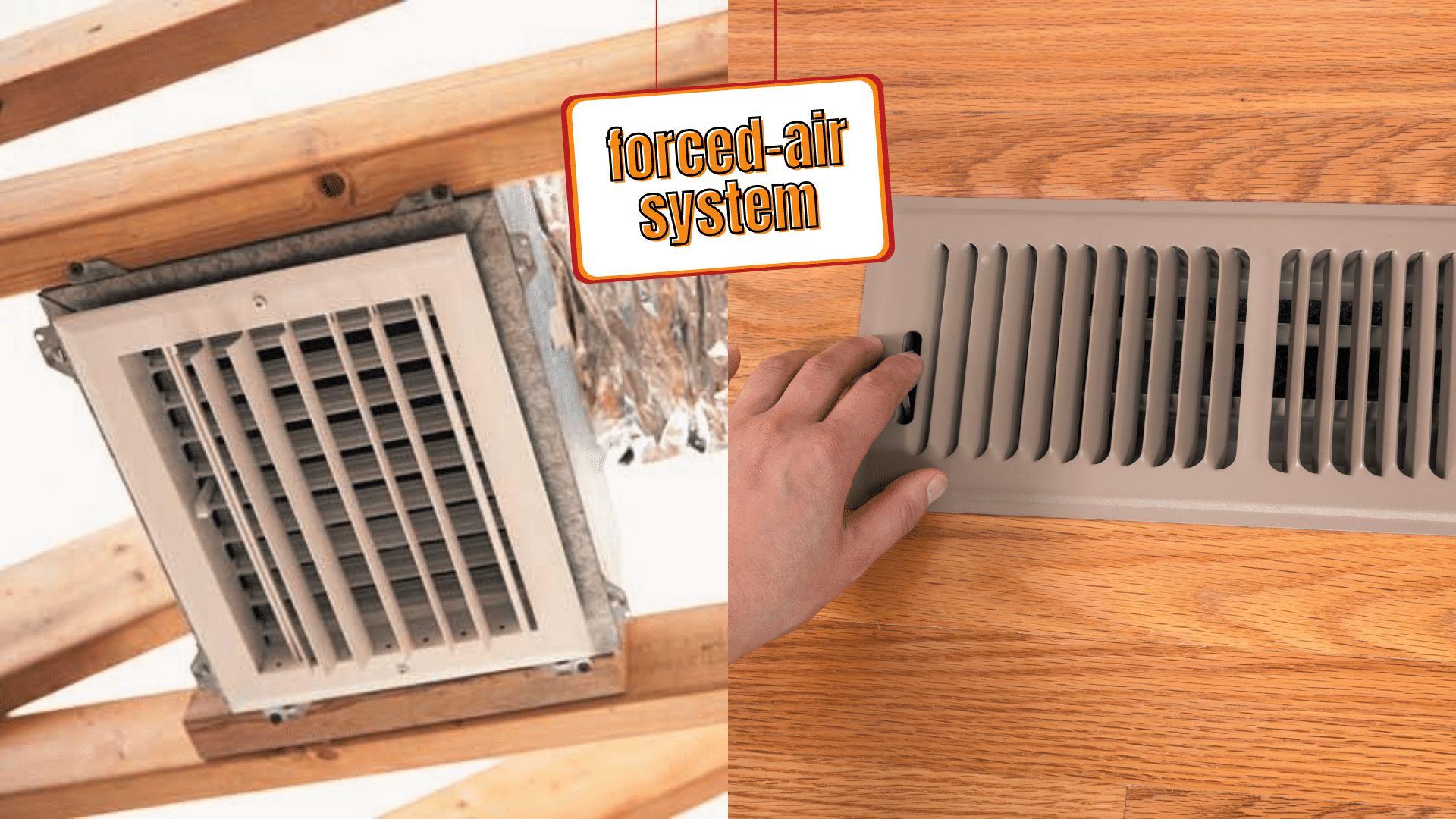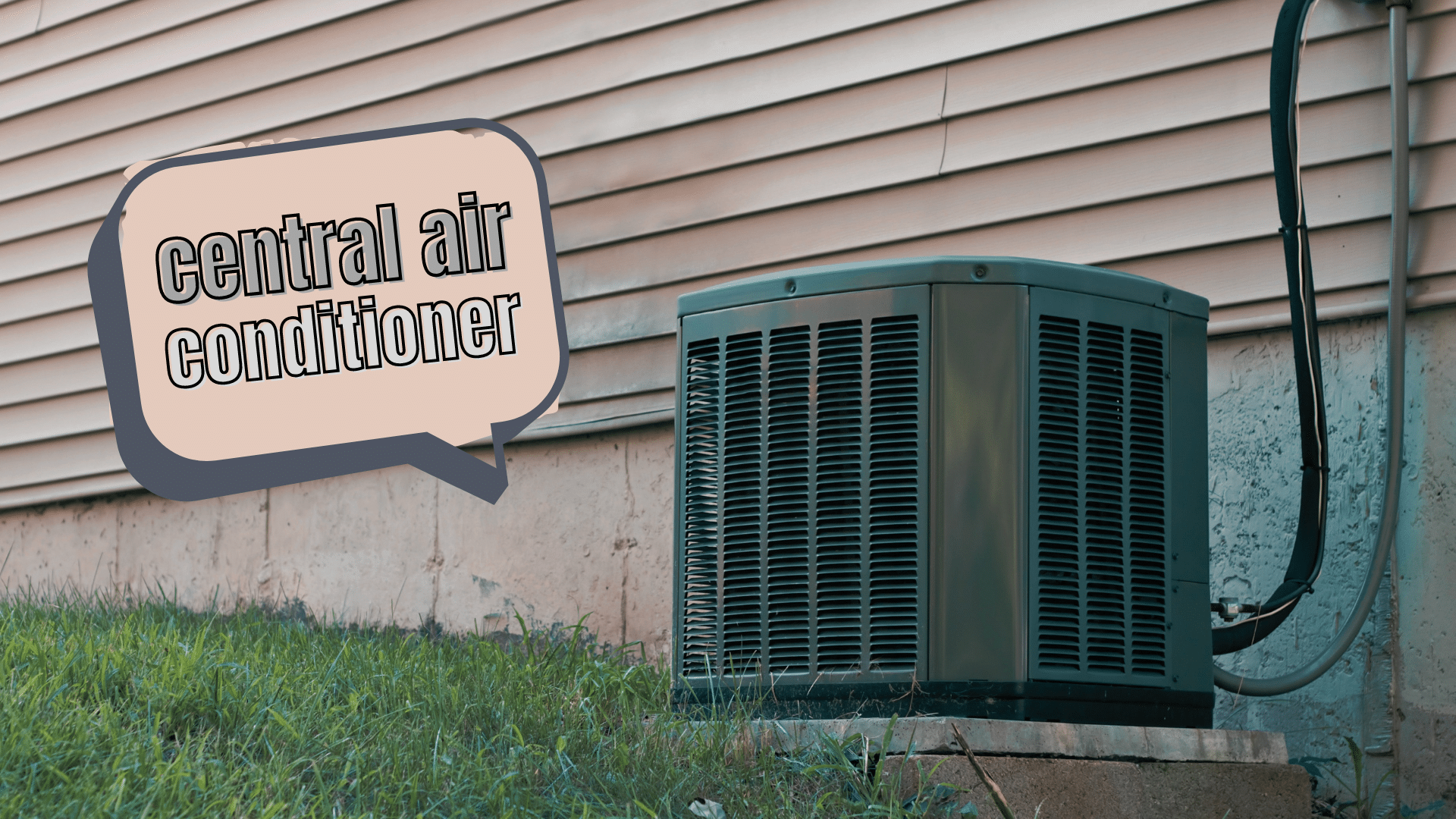When it comes to HVAC units, several technical terms get thrown around. From the product catalog to your technician doing the installation, it's natural to hear phrases such as "forced air" and "central air" all the time.
Many are under the impression these are two opposing systems– but that's not the case. In fact, central air is one type of forced-air system that can cool your home.
With the average American household spending around $1,200 per year on air heating and cooling, you must understand the difference between the two to choose the best system for your home needs.
What is a Forced-Air System?
Most homeowners refer to forced-air systems as heating systems, like a furnace. However, a forced-air system, in general, is an HVAC system that gives your home temperature-controlled air through the ducts and vents. That said, the furnace is considered a forced-air system, along with your heat pump (electric) and central air conditioner. (Related: What Is Forced Air Heating? Here's Everything You Need To Know)

An air handler "forces" the air into different rooms in the home. Thanks to a system of blowers, dampers, and vents– every occupant in a room can control the amount of warm or cool air they want.
In contrast, a mini-split air conditioning system is designed with an air handler into the indoor unit (which isn't compatible with a forced-air system).
What is Central Air Conditioning?
On the other hand, a central air conditioner uses a closed loop of cycled and refrigerated air to provide you with enough cooling in the scorching summer months.

These are usually composed of three main parts:
Both the condenser and the compressor are usually located on the outdoor unit. Once you tell the thermostat to have the central AC up and running, the room air is pulled to the indoor unit, where the heat is drawn out of the air once it passes the evaporator coils.
The now-cooled air is generally forced through the ducts to be ultimately distributed into the rooms. Meanwhile, the heat absorbed by the refrigerant will be transferred to the outdoor unit. Then, it is released in the outdoor air.
Note: You can connect a central AC and furnace into the same forced-air system. You may even include other units like a humidifier.
AC units with a heat pump (reversible cooling cycle) make the entire home system easier to maintain– given that it's only one unit that functions as a heater and air conditioner that feeds into the same forced-air system.
Difference Between Forced Air & Central Air
Central air is often confused with forced air systems– and it's pretty easy to grasp why. Both systems are similar, but the key difference is that central air refers to the AC unit itself, while forced-air refers to the available air distribution system.
A typical HVAC installation project often involves the replacement of a central AC unit and connecting it into your home's forced-air system. Simply put, a central air conditioning system utilizes the forced-air system to give cooled air while making use of the ducts, plenums, and vents.
It is independent of the furnace, which uses an outdoor unit that's not connected to the furnace in any way. Regardless, it borrows the delivery system to give cooled air throughout the home.
Forced Air vs. Central Air: Interpretation
There's not much of a significant distinction between forced air and central air systems, which makes it natural for many homeowners (and even some contractors) to be confused about which is which.
A good rule of thumb is that forced-air refers to the heating system, while the central air often pertains to the cooling system.
A central air system produces heated/cooled air in one location before dispersing them throughout the rooms in your house. In contrast, a forced-air system refers to an HVAC system that uses air ducts and vents to circulate temperature-controlled air into the home. Remember, forced air may only pertain to a furnace or heat pump if it utilizes ducts. A central AC unit uses the delivery system of a forced-air system to deliver conditioned air.
Forced Air vs. Boiler System
If you're browsing all the possible heating and cooling options for your home, perhaps a more accurate comparison is a forced air vs. a boiler system.
For cooling options, look into mini split vs. central air, ductless vs. central air, and window air conditioning units vs. central air. Trust us; it's less likely for you to choose between forced air and central air systems.
Alternatives to Central Air Systems
Unlike central air, several cooling system types do not utilize forced air. Ductless mini-split AC units, in particular, use two components similar to central air systems.
The indoor units are installed close to the ceiling (in one or more rooms) to pull in the air transferred through evaporator coils. As such, the cool air is blown back inside the home. Meanwhile, the heat is pushed out through the outdoor unit.
Some homeowners choose a mini-split than central air, despite having some ductwork in place already. Like windows, a ductless system helps you cool certain zones of a home instead of the entire building. Lastly, a ductless system will also give you more energy efficiency and easy maintenance.
Forced Air vs. Central Air: Which One Should You Choose?
With forced air systems, you can get filtered air for your home, and it's also relatively easy to upgrade the filtration. Many homeowners consider this as an excellent option to cool the entire house. Additionally, this system also naturally dehumidifies the air– making it suitable for properties located in areas with high humidity levels.
There's also no need to worry about high maintenance, as the system has pretty lax upkeep. Aside from keeping your home as comfortable as possible, it may also reduce your utility bills with proper use.
But, if the home already has an existing ductwork system in place– it might be better for you to continue using a central air system. Don't worry. You have plenty of highly-efficient units to choose from in the market today.
As always, we strongly recommend hiring a local technician with the right expertise and experience to install the HVAC system.
Frequently Asked Questions (FAQs)
What is a Central Air Conditioner?
Although this is quite a simple one, it might be unclear for some homeowners what makes up a central A/C. The compressor that cools the air is contained in a central unit. The cooled air is then forced through a ducting system, distributing it throughout the building. Blowers move the air through grated vents in the walls or ceilings.
How do I decide what Central System is right for me?
Having an HVAC technician come and check on your home is one of the best ways to ensure that you purchase the right central air conditioner size. It will be inconvenient to buy an oversized or undersized unit because it can lead to damp air and overproduction of cool air that will only be wasted. A technician will help you in choosing the right system.
What are the pros and cons of Forced Air Heating?
Forced air is a comprehensive, affordable option that's both sensible and effective. The heating is quick and makes sense for a lot of homeowners. Also, more than any other heating system, a forced-air system quickly pumps warm air through your home. There are also a few downsides that shouldn't be overlooked in your decision-making. Because air is being forced throughout our homes, dust, particles, and possibly mold are also being carried through. Regardless of how state-of-the-art your heating system is, it's always going to produce some noise.
